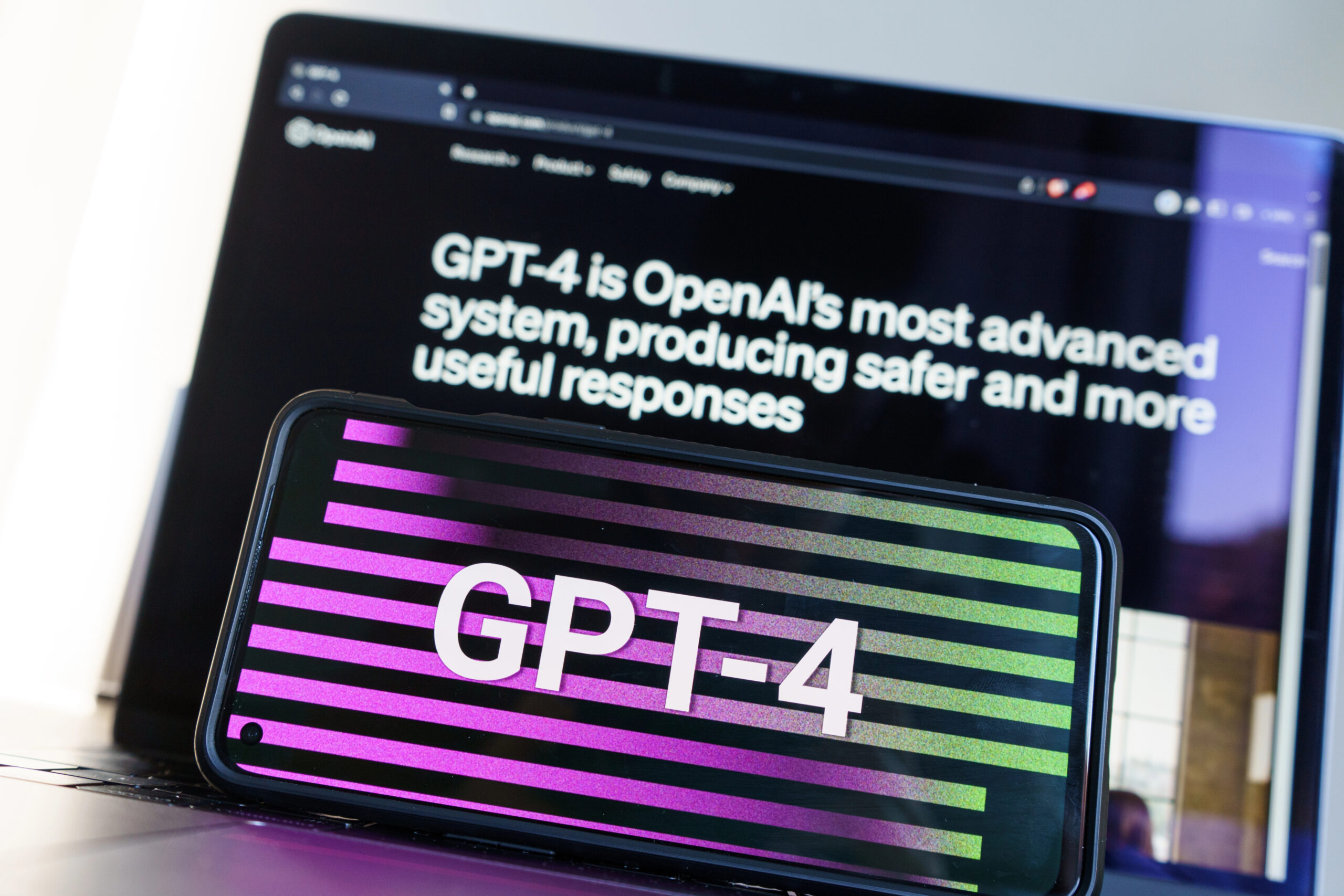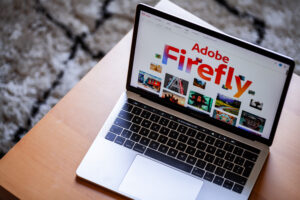As you delve into the world of artificial intelligence, prepare to witness a groundbreaking advancement that redefines the boundaries of visual AI. OpenAI’s latest innovation, GPT-Image-1, is not just another image generation model; it’s a paradigm shift in how we create and interact with visual content. Now accessible via API, this powerful tool empowers you to harness the capabilities of advanced AI-driven image creation within your own applications and services. From stunning artwork to realistic renderings, GPT-Image-1 opens up a realm of possibilities that were once confined to the imagination. Discover how this technology is reshaping industries and unlocking new creative potential for developers and businesses alike.
Unveiling the Power of GPT-Image-1: OpenAI’s Groundbreaking Visual AI API

Revolutionizing Image Generation
OpenAI’s GPT-Image-1 API represents a quantum leap in visual AI technology. This groundbreaking tool empowers developers to seamlessly integrate high-quality, customizable image creation into their applications and services. By leveraging advanced machine learning algorithms, GPT-Image-1 can generate stunningly realistic visuals across a wide range of styles and subjects.
Unparalleled Versatility and Accuracy
What sets GPT-Image-1 apart is its native multimodal capabilities. The API excels at:
Generating diverse image styles, from photorealistic to abstract
Accurately rendering text within images
Utilizing extensive world knowledge to produce contextually appropriate visuals
This versatility makes GPT-Image-1 an invaluable asset for creative professionals, content creators, and businesses across various industries.
Empowering Developers and Businesses
The API’s user-friendly interface allows for multiple simultaneous image generations, with adjustable quality and speed settings to suit different project requirements. OpenAI has implemented robust safety measures, including content moderation and C2PA metadata watermarks, ensuring responsible use of this powerful technology.
Industry leaders like Adobe, Figma, Canva, and Instacart are already harnessing GPT-Image-1’s capabilities, integrating it into their platforms to enhance user experiences and streamline workflows. This widespread adoption signals a new era in AI-driven visual content creation, promising to redefine the boundaries of what’s possible in digital imaging.
Transforming the Creative Landscape: How GPT-Image-1 Empowers Developers
Unleashing Creativity with AI-Powered Image Generation
GPT-Image-1 is revolutionizing the way developers approach visual content creation. By integrating this powerful API into their applications, developers can now offer users the ability to generate high-quality, customized images on demand. This capability opens up a world of possibilities, from enhancing user interfaces to creating dynamic, personalized content for marketing campaigns.
Streamlining Workflows and Boosting Productivity
The API’s ability to generate multiple images simultaneously, coupled with adjustable quality and speed settings, allows developers to optimize their workflows for various use cases. Whether it’s rapid prototyping or producing polished visuals for production, GPT-Image-1 adapts to diverse needs. This flexibility empowers developers to focus on innovation and user experience, rather than getting bogged down in time-consuming image creation processes.
Ensuring Responsible AI Integration
OpenAI’s commitment to responsible AI use is evident in the safety measures built into GPT-Image-1. Content moderation settings and C2PA metadata watermarks provide crucial safeguards, allowing developers to confidently integrate AI-generated visuals while maintaining ethical standards. This approach not only protects end-users but also helps build trust in AI-powered applications, paving the way for wider adoption and more creative implementations.
Multimodal Mastery: Leveraging GPT-Image-1’s Diverse Rendering Capabilities
GPT-Image-1’s advanced capabilities redefine the boundaries of AI-generated visuals, offering a versatile toolkit for creators and developers. This cutting-edge model excels in producing high-quality images across a wide spectrum of styles, from photorealistic renderings to abstract art.
Textual Precision and World Knowledge
One of GPT-Image-1’s standout features is its ability to accurately render text within images. You can rely on the model to generate visuals with legible, context-appropriate text, making it invaluable for creating infographics, memes, or product mockups. Moreover, the API leverages extensive world knowledge, allowing you to generate images that reflect real-world accuracy and cultural nuances.
Stylistic Versatility
Whether you’re aiming for a watercolor painting effect or a 3D-rendered scene, GPT-Image-1 adapts to your creative vision. You can experiment with various artistic styles, from impressionism to pop art, or even combine multiple styles for unique visual outcomes. This flexibility empowers designers and content creators to push the boundaries of their visual storytelling.
Customization and Control
The API offers granular control over image generation parameters. You can fine-tune aspects like image quality, size, and generation speed to suit your specific needs. This level of customization ensures that the output aligns perfectly with your project requirements, whether you’re creating high-resolution marketing materials or quick concept sketches.
Responsible Innovation: OpenAI’s Safeguards for Ethical AI Image Generation
As AI-generated imagery becomes increasingly sophisticated and accessible, OpenAI has implemented robust safeguards to ensure the responsible use of its GPT-Image-1 API. These measures aim to mitigate potential misuse while fostering innovation in visual AI.
Content Moderation and Filtering
OpenAI has integrated advanced content moderation systems into the GPT-Image-1 API. These systems work tirelessly to filter out inappropriate or harmful content, ensuring that generated images adhere to ethical standards. By leveraging machine learning algorithms, the API can detect and block requests for images that may violate community guidelines or legal regulations.
Watermarking and Provenance
To address concerns about the authenticity and origin of AI-generated images, OpenAI has incorporated C2PA metadata watermarks into every image produced by GPT-Image-1. This cryptographic signature allows users to verify the image’s AI-generated nature, promoting transparency and accountability in digital media.
Usage Limits and Monitoring
OpenAI closely monitors API usage patterns to prevent potential abuse. By implementing rate limits and usage thresholds, the company can quickly identify and address any suspicious activity. This proactive approach helps maintain the integrity of the platform while allowing legitimate users to harness the full potential of AI-driven image generation.
Integrating GPT-Image-1: Pioneering Brands Embrace the Future of Visual AI
As GPT-Image-1 makes its debut, forward-thinking companies are already harnessing its potential to revolutionize their visual content creation processes. This cutting-edge AI technology is being seamlessly woven into existing platforms, enhancing user experiences and unlocking new creative possibilities.
Adobe: Empowering Creatives with AI-Assisted Design
Adobe, a leader in digital creativity software, has integrated GPT-Image-1 into its suite of tools. This integration allows designers to generate initial concepts or variations of existing designs using natural language prompts. By combining AI-generated images with human creativity, Adobe is streamlining workflows and inspiring new artistic directions.
Figma: Collaborative Design Meets AI Innovation
Figma, the popular collaborative design platform, now offers GPT-Image-1 capabilities directly within its interface. Users can generate and edit images on the fly, seamlessly incorporating AI-created visuals into their design projects. This integration democratizes access to high-quality visual assets, enabling teams to iterate faster and explore diverse design concepts effortlessly.
Canva: Democratizing Design with AI-Powered Imagery
Canva, known for its user-friendly design tools, has embraced GPT-Image-1 to further simplify the creative process. The platform now offers AI-generated images as part of its vast library of design elements. This addition empowers users of all skill levels to create professional-looking graphics with ease, expanding the realm of visual possibilities for businesses and individuals alike.
Essential Insights
As you contemplate the implications of GPT-Image-1, consider how this groundbreaking API could transform your projects and workflows. The ability to generate high-quality, customizable images on demand opens up new possibilities across industries, from design and marketing to e-commerce and education. While embracing this technology, it’s crucial to remain mindful of the ethical considerations and potential impacts on creative professions. As AI-generated imagery becomes more prevalent, your ability to harness these tools responsibly and innovatively will be key. The future of visual content creation is here, and it’s up to you to explore its full potential while navigating the evolving landscape of AI-assisted creativity.
More Stories
Microsoft Elevates AI Shopping with Safety-First Model Rankings
With the introduction of a safety-first metric to its Azure Foundry model leaderboard, Microsoft empowers cloud customers to make more informed decisions.
CrowdStrike and Microsoft Unite to Harmonize Cyber Threat Attribution
CrowdStrike and Microsoft aim to harmonize the fragmented landscape of cyber threat attribution. Historically, varied naming conventions often muddled threat intelligence. This collaboration aims to standardize terminology.
Nomupay and SoftBank Forge Path to Seamless Cross-Border Payments in Asia
In today's world, seamless financial transactions are essential for global commerce. Nomupay and SoftBank are leading a major change in...
GCash and Open Fabric Launch NFC Payments in the Philippines
GCash and Open Fabric revolutionize the payment experience in the Philippines with NFC as they launch a groundbreaking Tap to Pay feature.
Mozilla Deploys AI-Driven Shield to Combat Crypto-Stealing Firefox Extensions
The deployment of an AI-driven shield from Mozilla leverages automated risk assessment to scan wallet-related add-ons for potential threats.
Sisense Intelligence: Transforming Data into Action with Generative AI
Sisense Intelligence offers a seamless experience, allowing you to interact with data using natural language and generate insightful dashboards without the need for complex coding.


